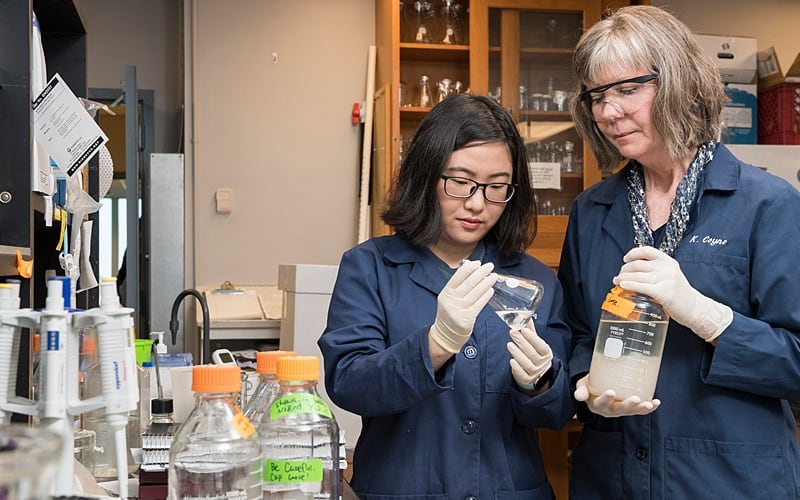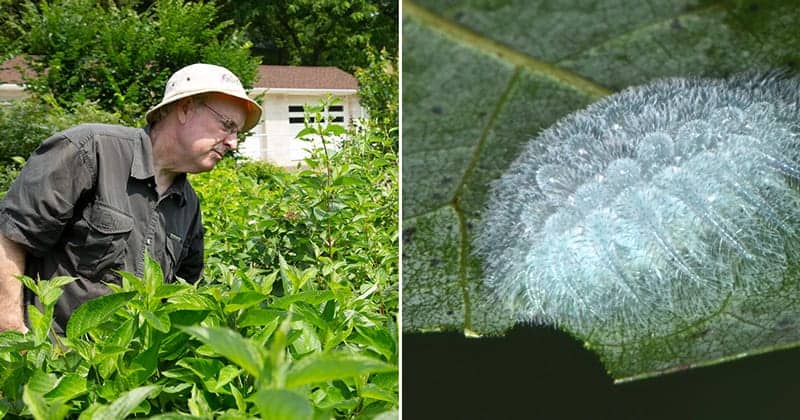 Research & Discovery
Research & Discovery
A Blog Devoted to UD Innovation, Excellence and Scholarship
Research & Discovery
A Blog Devoted to UD Innovation, Excellence and Scholarship
Bacteria bullets target toxic algae
ABOVE: University of Delaware Professor Kathryn Coyne (right) and doctoral student Yanfei Wang have patented a technique for embedding algicide-emitting Shewanella bacteria into gel beads. These “bacteria bullets” can then be placed in mesh bags for deployment to coastal waters to stop a toxic red tide bloom. | Photo by Kathy F. Atkinson
UD invention provides natural control for harmful red tide algae
Called harmful algal blooms (HABs), these massive events can produce toxins that sicken people, marine mammals, fish and birds, sometimes even resulting in death. Local economies dependent on tourism, clean beaches and healthy fisheries also suffer losses.
According to the National Oceanic and Atmospheric Administration (NOAA), HABs are a growing problem in every U.S. coastal and Great Lakes state. Red tides, in particular, have plagued Texas and Florida’s Gulf Coast and additional forecasting programs are in development for other HAB hotspots including Lake Erie, Puget Sound, Chesapeake Bay and the Gulf of Maine.
But now some of the most harmful algae — those that produce red tides — may finally have met their match. At the University of Delaware, researchers have invented an application to keep these toxic organisms in check, and without harming other sea life. UD marine scientist Kathryn Coyne, who led the work, calls the invention a “magic bullet” for red tide, and it is indeed small, yet powerful.
“We have been working with a bacteria that produces a compound that can kill dinoflagellates, which are among the most noxious of harmful algal bloom species,” said Coyne, who is an associate professor of marine biosciences in UD’s College of Earth, Ocean, and Environment, and director of the Delaware Sea Grant program. “We believe this natural algicide, embedded in gel beads and deployed in areas at risk, can prevent red tides from occurring or shut down those underway.”





